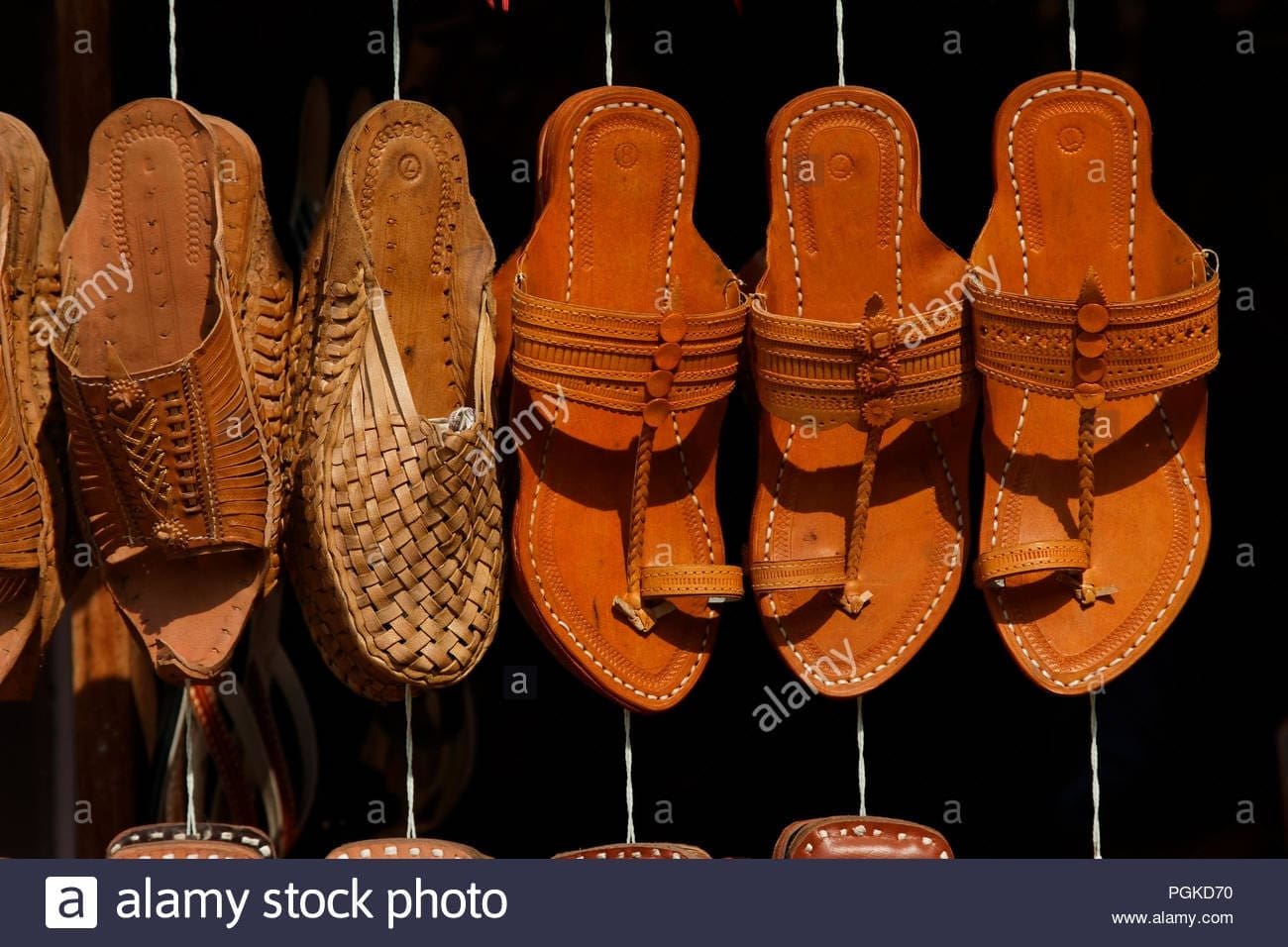Kolhapuris, the sturdy leather chappal that rose from its humble rural origins to occupy the high table of fashion globally, now has a Geographical Indication (GI) tag. The Controller General of Patents, Designs and Trade Marks has granted the GI tag for Kolhapuris to a large area in Maharashtra and Karnataka, covering four districts in each state. What the GI tag means is that footwear produced only in these eight districts will qualify to carry the tag of being Kolhapuris.. Producers of footwear in any other part of the country will now be forbidden from using the term Kolhapuris to hawk their ware.
The GI tag will open large markets – both domestic and international – to the artisans producing Kolhapuris in Kolhapur, Solapur, Sangli and Satara districts of Maharashtra and Dharwad, Belgaum, Bagalkot and Bijapur districts of Karnataka.
Kolhapuris are already an established brand abroad. A report in LiveMint in 2007 mentions ToeHold, a brand of Kolhapuris produced by an all-women group of artisans in Athani, a tiny village in Belgaum district, bagging a $60,000 (Rs 25.8 lakh) order from a Russian firm.
Artisans in Kolhapur, some of them 4th generation specialists in crafting Kolhapuris, welcomed the news. Sanjay Tapase, whose family trades in Kolhapuris, said while Kolhapur has more skilled artisans, Karnataka beats Maharashtra in bulk production of the famed footwear. He, however, added that with law acting against Kolhapuri knock-offs being produced in other parts of the country, the market for genuine product will expand. “Let artisans in both states benefit. There is no quarrel there,” Tapase said.
A joint bid for GI tag was made by the Sant Rohidas Leather Industries & Charmakar Development Corporation Limited of Maharashtra (LIDCOM) and the Dr Babu Jagjeevan Ram Leather Industries Development Corporation of Karnataka (LIDKAR) in 2009 after a previous bid by Maharashtra was rejected.
According to the GI application made by the two states, Kolhapuris can be traced back to the 12th century when King Bijjal ruled Bidar in Karnataka and his prime minister Vishwaguru Basavanna wanted to create a casteless society and remove the stigma associated with the cobbler community. The community embraced Lingayat faith and used its creative skills to start producing footwear known equally for its ruggedness and regal bearing.
Brand Kolhapuri came into being only in the beginning of 20th century when the footwear began to be traded in Kolhapur. Chhatrapati Shahu Maharaj (1874-1922) of Kolhapur encouraged its production and 29 tanning centres were opened during his rule in Kolhapur, said the proposal.
Managing Director, LIDCOM, Rajesh Dhabre said the GI tag is a victory for artisans involved in producing Kolhapuris for generations. “Only authentic and genuine Kolhapuris should be available in stores the worldover,” he said.
Dhabre’s counterpart at LIDKAR, Prasad Abbayya, said the next step will be to help the craftsmen reap the benefits of GI tag. “We will open new training institutes to ramp up production. We will now market Kolhapuris aggressively around the world,” Abbayya said.

